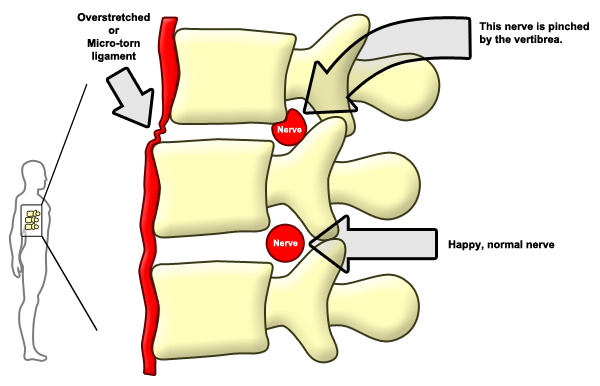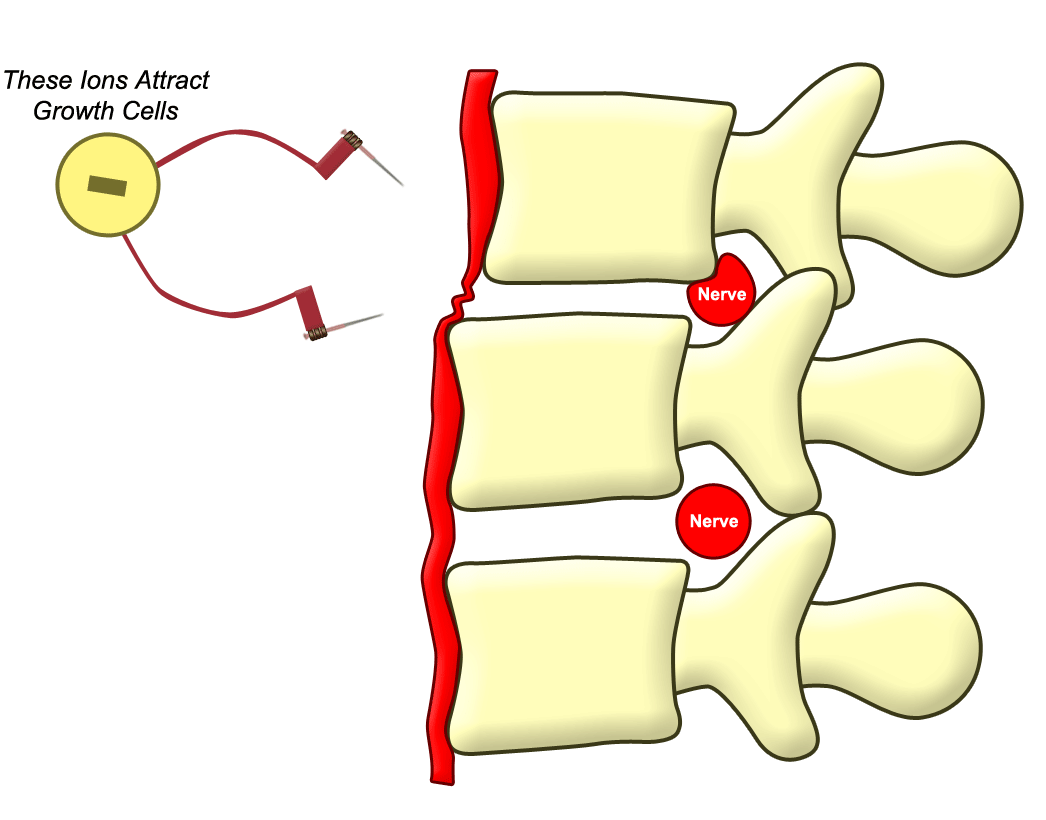PINS - Prolotherapy for Chronic Low Back Pain


* This illustration is only for purposes of explaining the theory and goals of PINS-Prolotherapy and not to be taken literally as a fact or garuntee of success.
With PINS Prolotherapy acupuncture needles are inserted into these "loose" or degenerative tissues and a powerful but relatively painless stream of ionic current is introduced into the body through these needles. In the case of the more traditional Sclerotherapy, or Prolotherapy, the doctor uses a syringe to inject a chemical irritant into the same tissues. Either way, the local irritation produces a healing growth reaction in the body at the site of pain, the goal of which is to cause the patient to produce his own new connective tissue where it is needed.
Four Prolotherapy studies of high quality with many patients and controls were reviewed in the prestigious journal, Spine. In two of the studies the results were impressive with the patients rating their pain and disability levels at 6 months post-Prolotherapy. The treatment produced ratings of more than 50% reduction in pain and disability in the treatment groups versus the control groups. In the other two studies the improvement was not statistically significant. The reason for this inconsistency is possibly the fact that the successful Prolotherapy groups also received exercise rehab training and other therapies during the Prolotherapy. These therapies appear necessary to stimulate the further growth of quality new tissue. The groups that showed less convincing Prolotherapy successes failed to give such training, and the groups that gave only the exercise rehab and therapies without the Prolotherapy were also statistically less successful. It should be noted, also, that in all patients in all studies the Prolotherapy DID NO HARM.
So the bottom line is:
Prolotherapy is a good possibility for chronic low back pain before the patient resorts to surgery, particularly when it is coupled with exercise training and other therapies.
Return to the Articles Page
Return to the Where's Your Pain? Page



